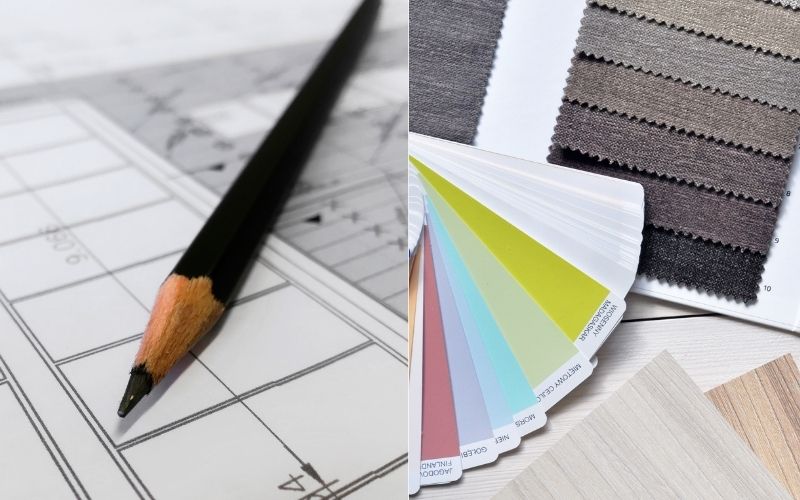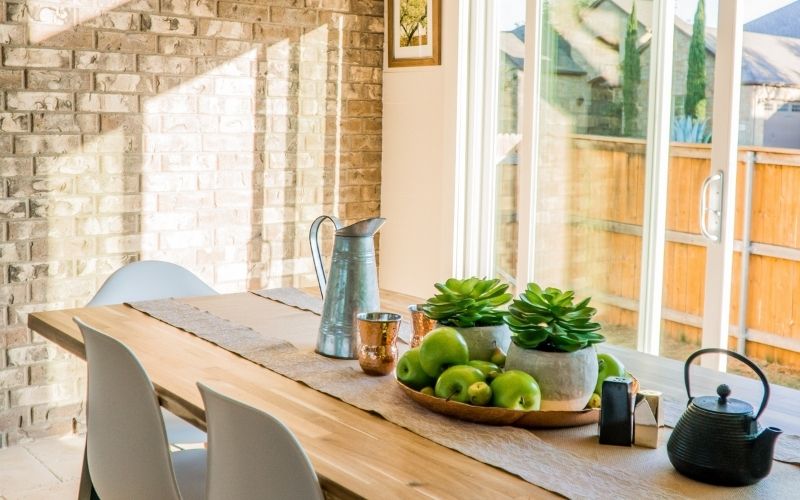Interior Designer vs. Interior Decorator: What are the Differences?
If you have ever been in the market to update certain areas of your home but are unsure if you need an interior designer or an interior decorator (or if you didn’t realize that there was a difference) then read along to learn more about what makes each profession different. The following will break down each of the two professions so you can make an informed decision about who you need to hire for your project.

Interior Designer
In textbook terms, interior design is the art and science of understanding people’s behavior to create functional spaces within a building. Therefore, an interior designer has been formally trained to review and analyze behaviors of their clients as well as the functions of the spaces in which their clients live to create a final design plan and strategy.
- Education: The interior design profession requires a two to four year degree specializing in Interior Design and also formal training. During schooling, classes may focus on: color and light and the psychology connected to them, textiles, residential, commercial, and hospitality design, hand-drafting, space planning, building codes and regulations, computer-aided drafting (CAD or Revit), architecture, history of furniture, ergonomics, estimating, learning the spatial requirements, etc.
- Credentials: In certain states & provinces in North America, professional designers are required to pass an exam and become registered with a governing council before they can be called interior designers. In areas where certification is not required, this does not mean that a designer is not a credible professional. Take time to search professional requirements for interior designers in your area as you analyze firms that interest you. Designers can most often be found as members of ASID – American Society of Interior Designers, NKBA – National Kitchen & Bath Association and NARI – National Association of the Remodeling Industry. Beyond the typical education, interior designers can opt to meet educational and experience requirements held by the NCIDQ to qualify, take and pass a strenuous three part NCIDQ exam. This exam through the National Certification for Interior Design Qualification is often required for application and state recognition as a Certified Interior Designer. Che Bella Interiors is a proud member of ASID, NKBA, NARI, and one of our designers holds a CID license for the State of MN!
- Role of Interior Designer: Designers discuss the space(s) needing change with the client in full detail and with special attention to how the space(s) needs to function for them. Interior designers are able to help with spatial planning, new construction design, or remodeling of a current home. In addition, they can create furniture space plans and help source furniture, rugs, lighting, art, accessories, window treatments, and more. All of our schooling and in-field training is used to produce creative and technical solutions that are not only functional but practical and aesthetically pleasing while enhancing the quality of life for our clients.
- Who do they work with? After the design phase has been completed with a client, interior designers work very closely with architects, contractors, and various trades, such as flooring installers, tile installers, plumbers, electricians, painters, etc. Most interior designers want to be a part of the on-going process during the entire project so they can insure that timelines are met and that the overall quality of work is meeting expectations and fulfilling the vision of the design created.
 Interior Decorator
Interior Decorator
- Schooling: The interior design profession does not require schooling or formal training. A decorator may have a degree in a related field, but a college degree in the interior design area of study is not required. Most interior decorators focus primarily on surface aesthetics of the space rather than working with changing of the layout, electrical, plumbing, or anything structural.
- Role of Interior Decorator: Interior decorators are able to view a space and talk with the client about how to troubleshoot minor issues in the space by changing the colors, accessories, textures, lighting, and possibly furniture sizing. In textbook terms, decorating is is the furnishing or adorning of a space with fashionable or beautiful things.
- Who do they work with? Most often decorators work with trades such as painters, delivery companies, vendors etc. They do not work with architects or contractors and are not usually changing the structural layout of the space.
Which One Do I Need?
If you are looking to change anything structural or looking for spatial layouts for your home we recommend consulting with an interior designer. If you are looking to refresh your space with advice on paint, accessories, furniture, lighting etc. we would recommend working with an interior decorator.
At Che Bella Interiors, we work with many clients on a variety of projects. These projects may include coordinating selections for a new home that is being built, to remodeling one room in a home or even an entire home. We also source furniture, art, rugs, accessories, lighting, window treatments and more. It is very important to our team that we take the time to understand our client’s needs so that in the end the we have delivered on what our client had envisioned.
Written by the Che Bella team

 Interior Decorator
Interior Decorator





